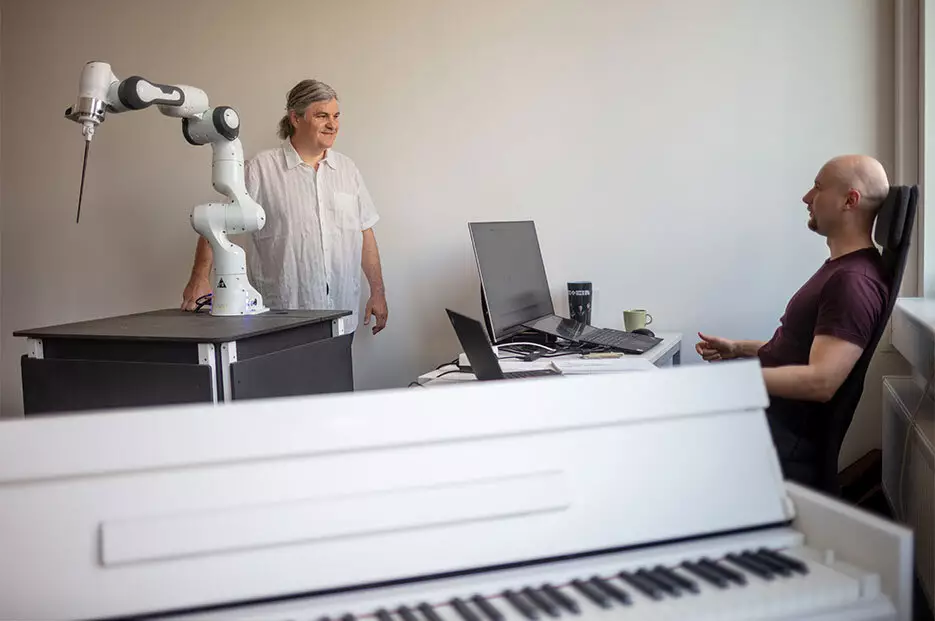In an extraordinary fusion of technology and artistry, a pioneering three-armed robot has made its public debut as a conductor in the iconic city of Dresden, Germany. This robotic maestro is not only designed to imitate human gestures but has also been trained specifically for conducting. Its arrival signals a remarkable step forward in the exploration of artificial intelligence within creative fields. With batons wielding a striking resemblance to the famed lightsabers from the “Star Wars” franchise, this robot has navigated the complexities of orchestral direction, raising questions about the future role of machines in the arts.
The robot conducted two distinct performances alongside the renowned Dresdner Sinfoniker orchestra, showcasing original compositions tailored for its unique capabilities. One notable piece, titled “Semiconductor’s Masterpiece,” features the innovative work of composer Andreas Gundlach, who collaborated closely with both the orchestra and the Dresden Technical University’s researchers over a two-year period. This partnership emphasizes the merging of engineering and the arts, aiming not to replace human musicians, but to enhance their potential through collaboration.
The Dynamics of Conducting
What sets this robotic conductor apart from its human counterparts is its ability to operate each of its three arms independently, allowing it to manage different sections of the orchestra simultaneously. This unprecedented capability enabled the robot to differentiate dynamics and maintain tempo in a way that challenges traditional conducting practices. The complexity of multitasking in conducting was put to the test in the premiere of another piece, “#kreuzknoten” by composer Wieland Reissmann, which involved musicians playing at various tempos. The robot’s dexterity brought a novel interpretative style to these performances, demonstrating how technology can push the boundaries of artistic expression.
Gundlach elaborated on the inspiring journey of training the robot, describing the meticulous process needed to instill movement aesthetics that resonate with the orchestra. He mentioned that this experience provided him with enlightening insights into human creativity and the intricacies involved in conducting—a reflection on the delicate bond between human and machine. His sentiments resonate with a growing realization that while technology can replicate certain skills, the essence of human artistry remains unparalleled.
The Future of Collaborative Robotics
The introduction of this unique robotic conductor raises significant questions about the future of live performances and the evolving landscape of the music industry. As society continues to explore the potential of collaborative robots, also known as ‘cobots,’ it’s crucial to consider the implications for creativity and artistic collaboration. The Dresden robot stands as a testament to innovation, paving the way for a future where human musicians and robots can harmonize in unprecedented ways. This evolution marks the beginning of what could be a transformative journey in the music world, one where technology contributes to and enriches the human experience rather than replacing it.


Leave a Reply
You must be logged in to post a comment.